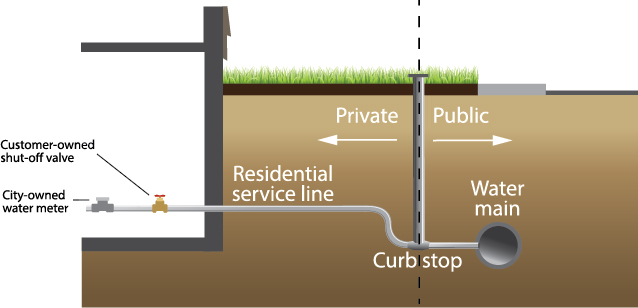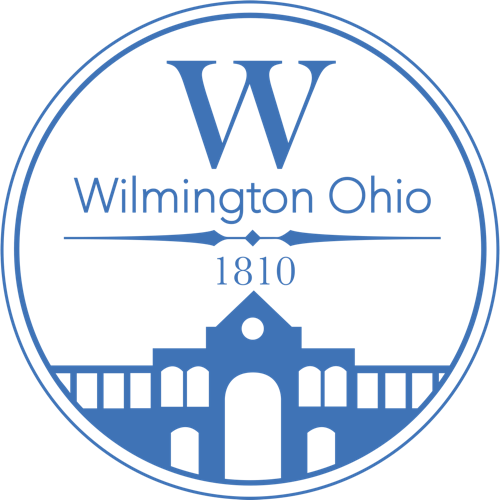Lead Exposure is a Concern
There’s growing awareness that some homes have lead in water pipes, fixtures and plumbing. Lead presents health concerns for people of all ages and particularly for infants and young children. In children, low levels of exposure have been linked to learning disabilities, behavioral problems and other issues. Lead is a common, naturally occurring metal found throughout the environment. Lead seldom occurs naturally in bodies of water like rivers and lakes, and lead is not present in water coming from the Wilmington Water Treatment Plant. Despite concerns about drinking water, the U.S. Environmental Protection Agency notes that “the greatest exposure to lead is swallowing or breathing in lead paint chips or dust.”
Where Water Meets Lead
The water leaving the treatment plant and traveling through water mains is free of lead. However, lead is sometimes present in pipes connecting older homes to the water system or in fixtures and home plumbing solder. The Wilmington Water Treatment Plant adjusts the water’s chemistry to minimize the possibility of lead dissolving into the water. EPA-required testing over many years has confirmed that Wilmington’s water is stable – meaning it is not corrosive or excessively depositing. Stability prevents lead from leaching into the water during normal usage.
The greatest potential for lead contamination of the water occurs when the service line between the water main at the street and the home contains lead. Lead may also be present in the solder used on copper pipes before 1987, and in older brass fixtures. Until 2014, brass fixtures were allowed to contain up to 8 percent lead.
Because lead pipe is pliable and durable, it was used extensively for service lines until the 1940s. While Wilmington’s water chemistry minimizes the leaching of lead into the water, when a service line is disturbed due to work being done on or near the line, lead will likely be released into the water.
To mitigate the release of lead into consumers’ water during water line work, the City of Wilmington is launching a program that will require the lead and steel service lines to be replaced whenever they are discovered during the normal course of work on the water system.
The service line that runs between the water main at the street and the building is a shared responsibility. The portion between the main and the shut-off valve, often called a curb stop, is the responsibility of the city. The portion between the valve and the building is the responsibility of the homeowner. This arrangement is used by most water utilities across the country.
 Note: Some water meters are in an underground pit near the street instead of the basement.
Note: Some water meters are in an underground pit near the street instead of the basement.
Service lines in Wilmington are made of plastic, copper, lead or steel. Differing materials can sometimes be found on either side of the shut-off valve.
Steel pipe, which is extremely susceptible to corrosion, has been prohibited from being installed in the city since at least 1964. When steel is installed downstream from a lead line, the corrosion in the steel pipe will contain lead. Removal of the lead portion of the pipe will result in lead being released from the steel pipe’s corrosion for an extended period of time. That’s the reason steel pipe is being included in the removal program.
Property owners have the option of hiring a private contractor to install a new service line, or contract with the city for its crews to do the work. If the city does the work, a $1,500 fee will be charged. At the same time, the City will remove lead lines from its side of the shut-off valve.
Lead service lines are most often discovered when working on leaks on the main or the service line. These are emergency-type situations that cannot be predicted.
How to Determine if you have a Lead Service Line
For the vast majority of properties, the city does not have records showing the type of service line. The maps at the links below show the properties where it is possible that the service line may be made of lead. Parcels on the maps that show no indication of service line can be assumed to be non-lead, based on the age of the property.
Northwest Quadrant Lead Service Map
Northeast Quadrant Lead Service Map
Southeast Quadrant Lead Service Map
Southwest Quadrant Lead Service Map
Residents can try to determine the material in their service lines by using the technique contained in the brochure at this link. (Courtesy of Green Bay (Wisc.) Water Utility)
Lead Pipe Identification Brochure
While the City is mandating the replacement of lead and steel service lines only when other water-related work is being done, some property owners may want to proactively replace their line. A customer is always welcome to hire a private plumbing contractor for this work. Alternatively, a property owner may contract with the city to have city crews replace the line. The cost will be $1,500, and the property owner will have to hire a plumber to hook-up the new line to the building’s plumbing system. Please note that much of the work the city water crew handles is on an emergency basis, and service line replacement will be scheduled around other work.
To inquire about contracting with the City to replace a lead service line, call Water Department Superintendent Rick Schaffer at 937-382-3614.
What else can be done to minimize exposure to lead?
Run the Tap Before Use – Lead levels are normally at their highest when water has been sitting in the pipe for several hours. Clear this water from pipes by running the cold water for at least three minutes, which allows fresh water to be drawn from the main. The further a house is from the main, the longer the water should be allowed to run. Running the water is even more important when the water hasn’t been used for several days, like when returning from a vacation.
To conserve water, other household water usage activities such as washing clothes, showering, flushing the toilet and running the dishwasher are effective methods for flushing pipes and allowing water from the distribution system to enter household pipes.
Clean Aerators – Aerators are small attachments at the tips of faucets which regulate the flow of water. They can accumulate small particles of lead in their screens. It’s a good idea to remove aerators monthly and clean them out.
Use Cold Water – Begin with cold water for drinking, cooking or preparing baby formula, because hot water dissolves lead more readily.
Filter the Water – Many home water filters are effective at removing lead. Before purchasing, make sure it is certified for lead removal and that you maintain it properly. Find out more on household water filters from the NSF International, the organization that certifies the efficacy of water treatment devices.
More information on lead can be obtained from:
Ohio Environmental Protection Agency

